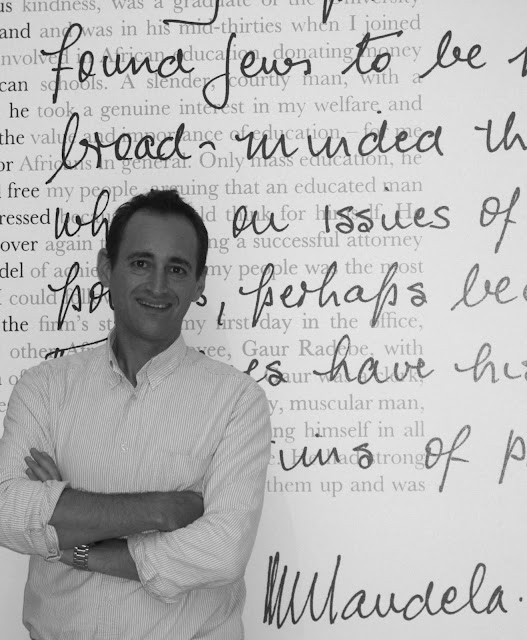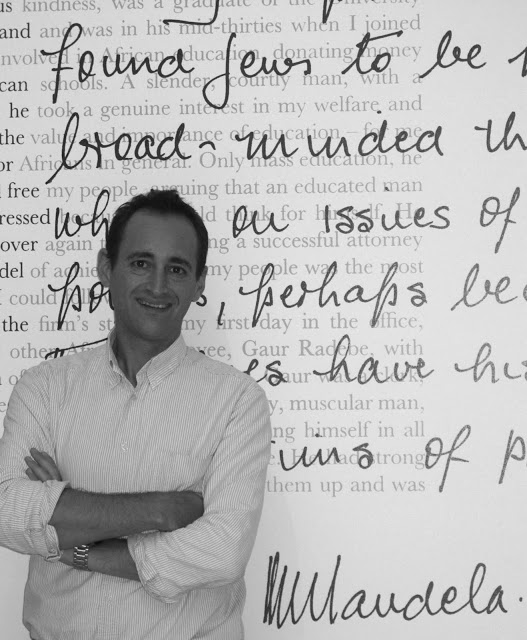 |
Gavin Morris was recently appointed the new director of the South African Jewish Museum. We sat down with him to find out more about him and his vision for the museum.
Tell us a bit about your background:
I grew up in Bloemfontein, which at the time had a small but vibrant Jewish community. After a gap year in Israel with Habonim, I enrolled at UCT and graduated with a BA degree in History and Jewish Civilization. After graduating I worked as a producer in the film and advertising industry for 12 years including five years in the UK. In 2007 I enrolled for an MBA at UCT, and thereafter worked in marketing. Immediately prior to my starting at the SAJM, I was working for Stellenbosch University marketing their business school. Being at the SAJM though has brought me full circle, back to my interests and personal roots. It’s great to be here and to have an active role to play within the community.
For those who have not visited the museum before, why do you think they should visit, and what exciting features can they expect to see?
The SAJM is a fantastic resource and experience; and provides a narrative of the South African Jewish experience. In fact, the museum incorporates the very first shul established in South Africa. It tells our community’s story — ‘from Shtetl to Sandton’ — and everything in between. The museum is based on three main themes: Memory, Reality and Dreams. These are reflected in the journey visitors take as they pass through the exhibits. The museum has a rich variety of media, including interactive displays, archival film, scale models, memorabilia and the like. My personal favourite aspect is the to-scale replica of shtetl life. The museum is also home to the Isaac Kaplan Collection of netsuke (miniature Japanese sculpture). This is one of the finest private collections of netsuke in the world. It’s a real treat for those interested in Japanese art and history. We have visitors, local and foreign, who come specifically to see this collection. The Museum building itself is as much an attraction as the contents inside. Finished in Jerusalem stone, the museum is a synthesis of the old and new, assimilating the historic Old Synagogue into a thoroughly modern building with its iconic circular staircase as the centrepiece. The museum won the Cape Institute of Architects Award in 2001.
Tell us about current and future exhibitions at the museum:
The museum also runs temporary exhibitions focussing on a particular person, place or time that resonates with the museum’s themes. We’re currently hosting an exhibition of the works of Herman Wald (www.hermanwaldexhibition.com). Many South African Jews will recognise some of his work, such as the Monument to the Six Million, which stands in West Park Cemetery. This is the first comprehensive exhibition of Wald’s work, a posthumous acknowledgement of a man who did not receive the recognition he rightfully deserved when alive. I’m also very excited about our next exhibition, starting in November, which will be about the Jews of District Six. I think it is safe to assume that almost every Jew in South Africa can trace some part of their family history back to the District Six era. I am really looking forward to it as I expect each visitor will have some family anecdote and/or recollection relating to material covered by the exhibition.
What are your goals for the museum?
My immediate goal for the museum is to raise its profile in both the South African Jewish community and in wider society. I also plan to broaden the educational outreach of the museum to communities who have a very limited interaction and understanding of Jews and Judaism. There is large amount of ignorance about our religion, about the Jews in South Africa and, of course, about Zionism. The museum must play an active role in addressing these shortcomings in our society. Finally, I hope to make the museum accessible to all Jews with South African roots by expanding the footprint of the museum beyond its four walls via travelling exhibitions and a establishing a comprehensive online resource of South African Jewish history.
How can community members get more involved in the museum, or assist the museum?
I’m glad you asked that. We have a group of very dedicated volunteer guides who have been with the museum since its inception. It is an intensely rewarding experience to be sharing your culture and history with others. In fact I would like to extend an invitation to anyone who is interested in becoming a guide, to contact the museum. We also have the Friends of the Museum initiative that community members can join. This has a nominal annual charge, but allows for free entry to the museum, invitations to exhibition openings, special tours, and a variety of other offerings. Community members wanting to be kept updated on the museum’s activities can also register on our database by emailing Natacha@SAJewishmuseum.co.za











